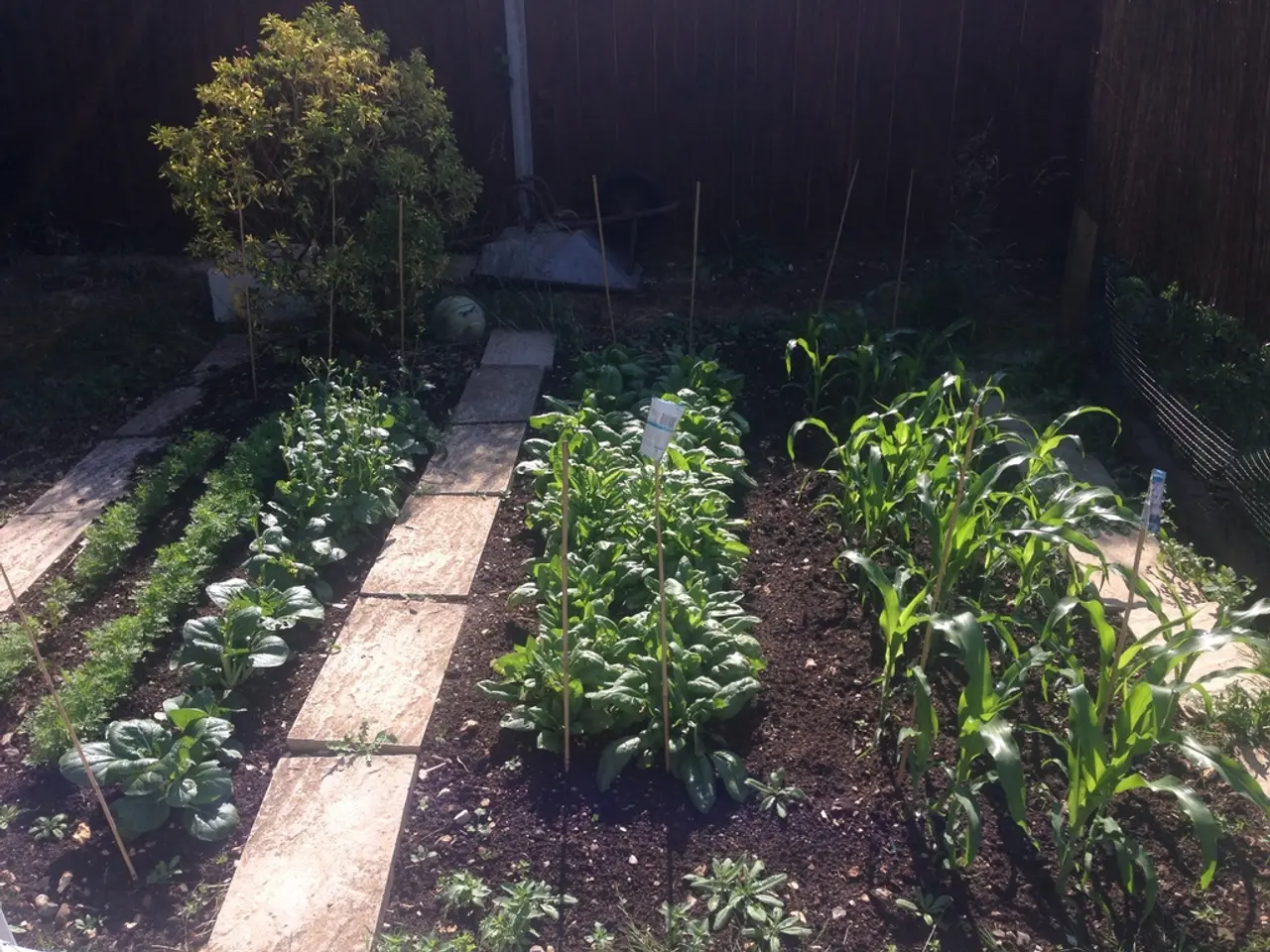Tips for First-Time Gardeners: Understanding Seed Packets' Back Details for Successful Planting
In the world of gardening, understanding the information on a seed packet is essential for a bountiful harvest. Here's a breakdown of the key elements you'll find on a seed packet, helping you grow healthy plants and enjoy a thriving garden.
First and foremost, the company name, address, and website can be found on the seed packet, making it easy to get in touch for any queries or support.
Logos on seed packets may indicate the seed is Certified Organic or Non-GMO, giving you peace of mind that the plants are grown using sustainable and natural methods.
As you delve into the packet, you'll find valuable information on lighting preferences, water needs, and soil type. This is crucial in ensuring your plants receive the right conditions to thrive.
The growing zone can be determined by matching a little map of the country with colored regions to your location. This helps you select seeds suitable for your climate.
Heirloom plants, generally 50-100 years old and often referred to as open pollinated, offer unique characteristics and can be a delight for any gardener. Selecting only heirlooms means you can save seeds, but saving seed from hybrids may not result in plants true to the parent.
To read a seed packet, note the germination time, growing zone, planting depth, plant height at maturity, plant spacing, planting instructions, plant description, and use by date. These details provide a comprehensive guide for planting and growing your seeds.
The packet may specify the zonal information for when to start the seed. The size at maturity is the basis for seed spacing to avoid wasting seed and having to thin the little plants. Some plants may be perennial or semi-perennial in warmer regions, while cooler climates will have to grow the seed as an annual.
Resistance on seed packets often refers to resistance to certain diseases, but could also refer to deer resistance or other pest tolerance. This information is important for managing garden health.
Hybrids are the result of crossing at least 2 plants in the same species and carry special traits. Cultivars on seed packets can classify a plant as heirloom, hybrid, open pollinated, or another group.
The back of a seed packet contains detailed information that guides successful planting and growing. Key items to interpret include the germination time, planting depth, plant height at maturity and spacing, planting instructions, plant description, use by or packed for date, cultivar type, resistance, organic or Non-GMO logos, perennial or annual status, maturity and harvest time, thinning instructions, succession planting, area coverage, company name, lot number, and website, growing year and lot number.
Starting seeds is a cost-effective way to grow flowers and vegetables. Older, expired seeds have variable germination, so for best results, use seed that is no older than 2 years.
A seed storage box with jute string and bamboo plant labels can help keep precious seeds safe. There are also non-GMO crops available that are all natural and have not been genetically modified.
In sum, interpreting seed packet info involves reading these elements carefully to match planting conditions, timing, and care practices to the seed’s needs, ensuring the best chance of healthy growth and good yield. Understanding the back of a seed packet is crucial for gardening success.
- To enhance your gardening knowledge and skills, consider enrolling in online courses on education and self-development platforms, providing valuable insights on home-and-garden topics.
- By focusing on heirloom plants and hybrids, each with their unique characteristics and growth requirements, you can elevate your lifestyle and enjoy a more diverse and bountiful garden.
- As part of your learning journey, understand the necessity of saving seeds from heirloom plants, but be aware that saving seeds from hybrids may not produce plants that are true to their parent.




